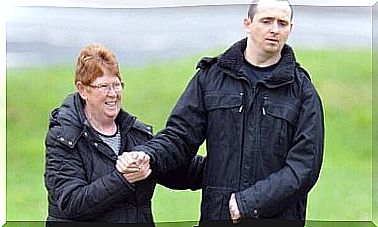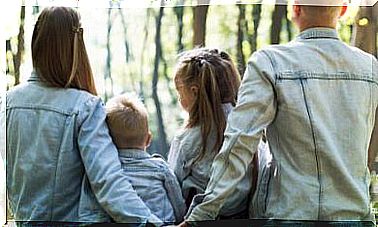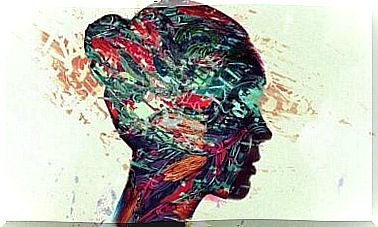Pathological Grief In Children – Dealing With Loss
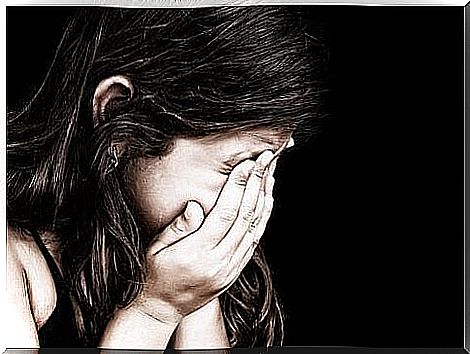
Pathological grief in children occurs as a maladaptive syndrome that can have serious consequences for their overall development and well-being. In this article, we analyze what pathological grief in children is, as well as its prognosis and treatment.
Grief is accepting and adapting to a new life after a loss (either of someone you love, an object of sentimental value, or a situation). This is difficult for all of us. We as adults have probably experienced such a loss once or twice, and have understood how difficult it is. So how will it feel for a child? Grief is especially difficult for children. This is because children are more sensitive to change and loss than adults.
Pathological grief in children – What it is and its symptoms
We would venture to say that most, if not all of us, have experienced the loss of a loved one. Even if you do not have it, it is common knowledge that it generates a deep pain in us. In the case of children, however, this reaction is mainly dependent on their development of maturity. At the age of 5 or 6, children begin to form an understanding of what death is. When they are 9 or 10 years old, they can understand the concept clearly.
In other words, older children understand that death is an irreversible process, that the deceased person will never return, and that sooner or later they will have to readjust their experience of the world.
We will now present some of the most characteristic symptoms of pathological grief in children:
- Intense sadness.
- Persistent crying.
- Irritability or aggression.
- Thoughts about and around death.
- Denial and an inability to accept death.
- Intense feeling of melancholy and sadness.
- A feeling of emptiness.
- A feeling of loneliness.
- Concern for the deceased.
- Anhedonia, a state of mind characterized by an inability to feel joy or desire.
- Difficulty communicating with others.
- Intense emotional reactions to memories of the deceased.
- Psychosomatic disorders.
- Active avoidance of places, people or things related to the deceased, and death in general.
As a consequence of these symptoms, the child’s normal function is disturbed. This in turn, creates major problems academically, socially and in the family relationships of the child.
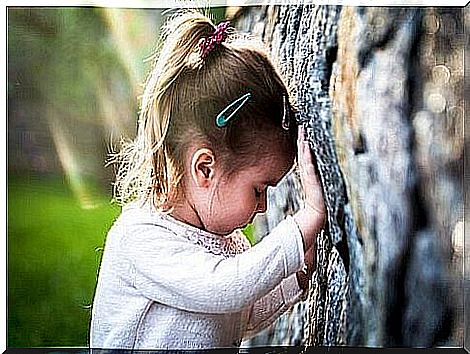
Different types of pathological grief in children and adults
Horowitz et al. (2003) identified four types of pathological grief in children and adults:
- Chronic grief : The pain from the loss is still intense, even after one year for adults and 6 months for children. The person has difficulty adjusting to their new life, without the person they lost.
- Exposed grief : After the loss, the person manifests only a few emotions around it. However, after a while, they experience a heavy emotional burden, related to the death.
- Excessive grief : The person feels so overwhelmed by the pain that they may even resort to aggressive behavior and self-harm. In addition, this can lead to other mental disorders.
- Masked grief : The person has physical and emotional problems that can lead to other problems. However, they are not aware that these problems arise from grief.
Normal grief compared to pathological grief
A common, or normal, grieving process is understood as the important stage in which a person:
- Have a reaction to the loss.
- Understand what loss entails.
- Re-adjusting their lives without the person they lost.
- Accepts the wallpaper.
- The memory of the deceased does not cause significant emotional reactions.
Now, how long should this process take? Researchers and psychiatric professionals agreed to establish an adaptation criterion instead of a temporal criterion. They also agreed that normal grief does not hinder a person’s daily life.
However, pathological grief in children, which lasts for at least 6 months, is much more complicated. These are the main characters that characterize it:
- This grief is more intense and lasts for long periods.
- It gives rise to maladaptive, avoidant behaviors that will hinder or limit the child’s life.
- It can affect the child’s feelings, self-esteem and identity.
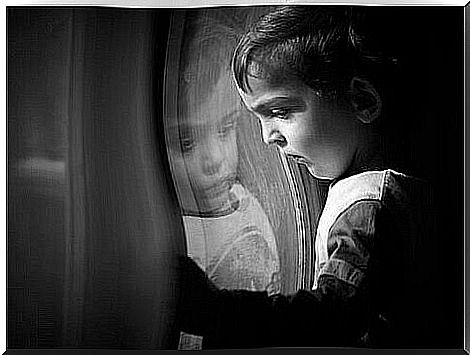
Controversy associated with this topic
Some mental health experts and researchers reject this diagnostic category in the DSM-5. The reason for this is that they believe that each person processes, interprets and expresses their feelings in their own, individual ways.
Therefore, for these psychologists, doctors and psychiatrists, including pathological grief as a psychopathological disorder will be like branding a person as mentally ill, when in reality they are only sensitive to a loss.
On the other hand, there are other professionals who actually agree to include pathological grief in the DSM-5, making it easier to find information about its specific signs and symptoms. They believe it is important to understand its clinical picture, course and prevalence in order to avoid misinformation and to raise awareness of this topic and its effective treatment.
Some recommendations
Today, there are effective psychological treatments for this condition in both children and adults. The first thing that needs to be done is to contact a psychologist who can treat pathological grief.
However, we will also share some other recommendations on how to deal with pathological grief in children:
- Talk to your child and answer their questions and concerns clearly.
- Let the child freely express their feelings and thoughts.
- Make sure your child has the right information about death, and that they know that their lives will be different now that someone they loved is gone.
- Also, be attentive enough to answer some of their questions. Let them know that you are there to help them with fear, dread, or insecurity.
- Show the child understanding and be patient.
- Give your child confidence and affection throughout the process.
Whether the grief is pathological or not, dealing with it is never an easy thing to do. It is important to learn to stand up for people who are going through a loss. Instead of being judgmental, let them know that they are not alone and that their feelings are valid and accepted. Be a helping hand in their grieving process, and help them adapt to their new reality.
